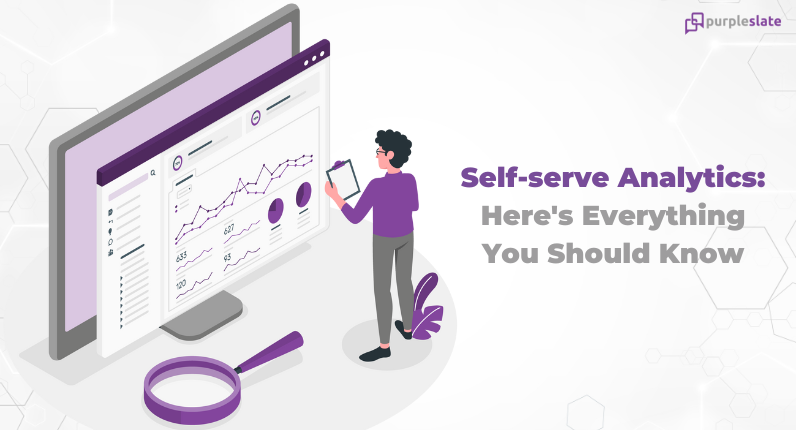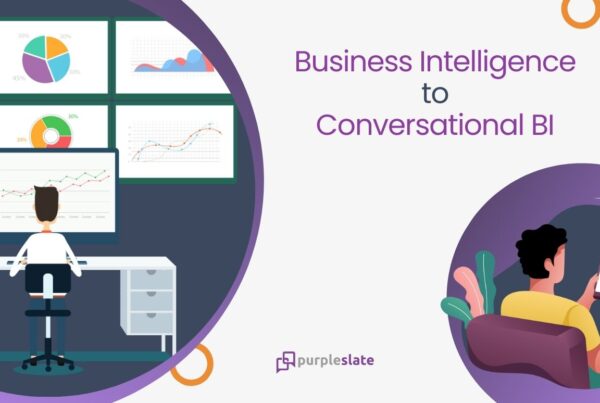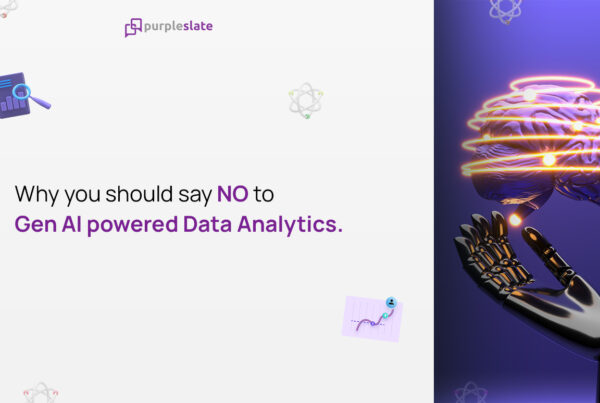
Introduction
Self-service analytics is an analytical user interface that allows customers or businesses to analyze data without requiring assistance from a data analyst or other IT staff. It provides users with the ability to derive insights using intuitive visualization tools and natural language querying.
Users can find answers to their questions, take action on the results, and monitor performance with real-time reporting. Self-service analytics removes the technical barriers that often stand between users and insights by providing a self-serve experience for exploring, visualizing, analyzing, and reporting on data.
It also streamlines collaboration among users by integrating collaboration tools into the analytical platform. In this article, we will answer these questions.
What is Self-Service Analytics?
Any company that is investing in data-driven decision-making will find benefits in self-service analytics. While it’s true that these systems are primarily designed to help employees interact with data and each other more efficiently, these tools can be used effectively by the business as a whole to summarize key performance indicators (KPI) and other important metrics.
Analysts are often swamped with requests from different departments for insights into their data. This is particularly true for large organizations with departments that regularly communicate with each other. But even with a small team, it’s not uncommon for stakeholders from various departments to request data, which can put a strain on existing resources.
Regularly scheduled meetings can help to clear up these issues, but there is often a lack of follow-through that results in delayed requests. A self-service analytics platform, on the other hand, can get insights immediately.
Why Self-service Analytics?
Any company that is investing in data-driven decision-making will find benefits in self-service analytics. While it’s true that these systems are primarily designed to help employees interact with data and each other more efficiently, these tools can be used effectively by the business as a whole to summarize key performance indicators (KPI) and other important metrics.
Analysts are often swamped with requests from different departments for insights into their data. This is particularly true for large organizations with departments that regularly communicate with each other. But even with a small team, it’s not uncommon for stakeholders from various departments to request data, which can put a strain on existing resources.
Regularly scheduled meetings can help to clear up these issues, but there is often a lack of follow-through that results in delayed requests. A self-service analytics platform, on the other hand, can get insights immediately.
Types of Self-Service Analytics
There are three main types of self-service analytics. These are self-serve exploration, self-serve modelling, and self-serve visualization. Self-serve exploration refers to the process of end users exploring their data and asking questions about it.
- Self-service analytics is used primarily for exploratory analysis, whereby end users are exploring a dataset to gain a high-level understanding of what it contains.
- Self-serve modelling is the process of end users creating their models from scratch. This type of analytics is primarily used for descriptive analysis, whereby end users use their data to create models that are then used to generate descriptive statistics about that data.
- Self-serve visualization refers to the process of end users creating their visualizations from scratch. This type of self-service analytics is primarily used for exploratory analysis, whereby end users are creating visualizations to gain a high-level understanding of their data.
Why Self-Service is Becoming a Priority
The goal of any BI strategy should be to make insights easily accessible to everyone across the organization. However, with traditional BI solutions, this has been a challenge. Business users who don’t have access to BI are often left out of the decision-making process, while analysts who own the systems and have the necessary knowledge often find the task of building and distributing reports to be a burden.
In some cases, it can even be difficult to identify and track which reports are most important and when they should be distributed. To overcome these inefficiencies and provide a better experience for all users across the organization, many businesses are turning to self-service BI solutions.
Self-service BI gives every employee in the organization access to data sources and simple visualization tools that allow them to explore data, identify patterns and correlations, and generate insights that improve decision-making across the company. While traditional BI solutions are designed to support senior leaders, self-service BI is designed to make data insights available to every employee across the organization.
How to choose the right Self-service Analytics platform for your business?
Choosing the right self-service analytics platform is a multi-step process. First, you’ll want to decide whether a cloud-based or on-premise platform is best for your business. If your company has strict security requirements, an on-premise solution may be best, but it also may be more difficult to adopt.
You should be asking the following questions while choosing a cloud-based platform:
- How easy will it be to onboard new users?
- Is there a learning curve associated with the platform?
- What type of data can you store on the platform?
- What kind of scalability does the platform offer?
The benefits of Self-serve analytics
To reiterate, Self-serve analytics provides users access to insights, without needing an analyst or data scientist to help them. It makes company data accessible with user-friendly interfaces and increases user adoption.
- Self-serve analytics can increase data adoption across the company by automating tasks, such as assigning permissions and creating new datasets.
- Self-serve analytics can help you operate in a more agile environment, as it allows users to quickly turn insights into actions.
- Self-serve analytics can help your company respond more quickly to business changes, such as product launches and marketing initiatives.
- Self-serve analytics can make data more accessible to non-technical users, while still maintaining data accuracy.
With self-service analytics, your organization’s data analysts will spend less time performing basic analysis requests. This will allow them to focus their efforts on higher-level strategic projects, which will in turn help you extract greater value from your data assets.
Other benefits include,
- Quicker data discovery
- Better ROI from existing data assets
- Increased employee engagement, and a reduction in the time and money spent on data preparation.
Summary
The rise of self-service analytics is a sign of the times. Businesses are under increasing pressure than ever to generate insights rapidly and make data-driven decisions. Traditional BI tools, designed for centralized, hands-on analysis, may struggle to keep up with these demands.
As a result, many organizations are turning to self-service analytics to provide employees with easy access to data sources and visualization tools that allow them to explore data and generate insights on their own.




